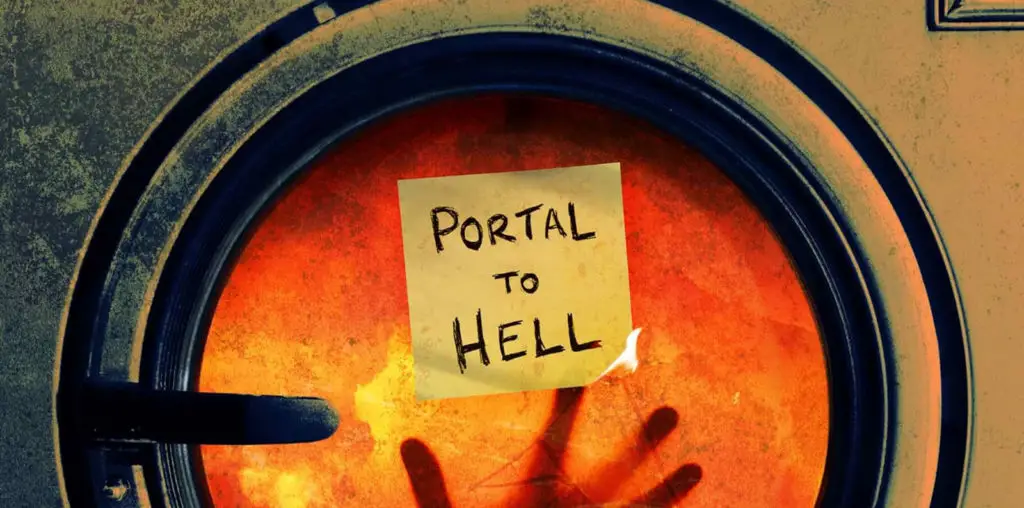
BOOTLEG FILES 415: “The Lark” (1957 TV production of the Jean Anouihl drama, starring Julie Harris and Boris Karloff).
LAST SEEN: It is on YouTube in an unauthorized presentation.
AMERICAN HOME VIDEO: None.
REASON FOR BOOTLEG STATUS: It has been out of circulation for many years.
CHANCES OF SEEING A COMMERCIAL DVD RELEASE: Possible.
The story of Joan of Arc has been the subject of numerous film and television productions. Some of these have been striking in their artistic consideration of the subject, most notably Dreyer’s “The Passion of Joan of Arc,” Rossellini’s “Joan of Arc at the Stake” and Sam Wells’ experimental masterwork “Wired Angel.” Some of these productions have been fairly irreverent, most notably in “Bill & Ted’s Excellent Adventure” when the eponymous nitwits mistook Joan for Noah’s wife. (Get it – Arc, Ark?)
But one of the consistent problems in Joan of Arc films is that the historic subject somehow remains as an elusive figure. Even supreme writers such as George Bernard Shaw and Maxwell Anderson never truly captured the complex contradictions that defined her existence and sealed her doom. It also doesn’t help that most of the actresses playing Joan are either too mature or too quotidian (the obvious exception being the great Falconetti in the Dreyer film).
French writer Jean Anouihl made his attempt to consider Joan’s odyssey in the 1952 play “L’Alouette.” British playwright Christopher Fry translated the play, retitled “The Lark,” for a 1955 London stage production. Broadway producer Kermit Bloomgarden saw the London production and believed that the subject had commercial value with Broadway audiences. However, he was unsatisfied with Fry’s translation and hired playwright Lillian Hellman to create a new English-language version of Anouihl’s work.
Hellman, however, was not fluent in French and required the services of a pair of Columbia University students to properly translate Anouihl’s text. However, a dispute arose between Hellman and the students, and she reneged on an agreement to pay their fees. Years later, Hellman would rue her actions – one of the students was a young man named John Simon, who would become one of the most prominent theater and film critics and a highly vocal detractor of Hellman’s output.
“The Lark” opened on Broadway on November 17, 1955, with Julie Harris as Joan of Arc. In a bit of inspired off-beat casting, horror movie icon Boris Karloff was hired to play Pierre Cauchon, one of the bishops responsible for Joan’s execution. A young Christopher Plummer was in the cast as a scheming English noble and Leonard Bernstein supplied incidental music to heighten the drama’s emotional sequences. The resulting production was a commercial hit that ran 229 performances and earned Harris a Tony Award as Best Actress. Karloff received a Tony nomination, and the show received Tony nominations for Joseph Anthony’s direction and for costume design and scenic design.
By the end of the run, it would seem natural that “The Lark” would be picked up for a film adaptation. However, there were two problems: Otto Preminger was already making his highly publicized film version of Shaw’s “Saint Joan” and Hellman was blacklisted due to her political activities.
But “The Lark” had a second life when the anthology television series “Hallmark Hall of Fame” offered to present the show in a live broadcast. The problem of Hellman’s blacklisting was solved by having a new teleplay credited to James Costigan and by not citing Hellman in any of the show’s promotional outreach. (She was only identified in the closing credits as the source of the Broadway adaptation.) Harris and Karloff were invited to recreate their stage roles, but Plummer (whose fame had yet to be established) was bypassed in favor of Denholm Elliott.
The televised version of “The Lark,” sadly, turned out to be an unsatisfactory experience on several levels. First, Costigan’s teleplay and George Schaefer’s direction did not adequately reconfigure the drama for a small screen setting. “The Lark” is a deeply theatrical experience, with Joan’s life told via flashbacks during her contentious church trial. The clergymen prosecuting Joan comment on the flashbacks as they take place, which is a fairly weird theatrical device.
Schaefer kept the stage elements of the flashbacks – bare-bones set design, having the characters speak directly to the audience, high decibel acting – but the camera magnified the frailty of the material to the point of making the drama seem fey. It also made the TV production look cheap – in comparison, the Hallmark commercials that punctuated the broadcast seemed to have higher production values. The camera also magnified Harris’ theatrical performance, which she failed to adjust to the specific parameters of a television production. While her interpretation of Joan may have been riveting when viewed from a distance in a Broadway theater, her wild-eyed anguish seemed overdone when seen in TV camera close-up. This was a frequent problem in Harris’ early career – her performances in “The Member of the Wedding” and “I am a Camera” were hailed in their original stage presentations, but her acting was stagy and absent of subtlety when the shows were transferred into film versions.
The rest of the cast offered unexpected distractions with a hodgepodge of accents. Karloff, Elliott and Basil Rathbone (as the chief Inquisitor) spoke with crisp, clear British accents, while Eli Wallach (as the dim monarch championed by Joan) and Jack Warden (as a soldier who aids her mission) sounded as if they emerged from a Brooklyn subway station. Warden, in particular, offered aural amusement by scolding Joan with the line reading, “Now stahp dat kinda tawk!”
Perhaps the weirdest element of “The Lark” was its ending. We all know what became of Joan of Arc, of course, but in the play the church leaders who coordinated her execution realized that they did not allow for a re-enactment of the coronation of Charles VII during the various flashback sequences. At that point, Wallach shows up, looks directly into the camera, and proclaims in a pissy voice, “I knew they’d forget about my coronation. It cost me a fortune – all that ermine!” Then, Joan shows up, looks at the camera, and says, “Come on, all of us, let’s crown Charlie!” Huh?
“The Lark” was broadcast live on February 10, 1957. Afterwards, the show was rarely seen again. The production survives via kinescope, but has not been made available for commercial home entertainment release. Dupes of the kinescope have circulated for years in the collector-to-collector market, and there is even a bootleg VHS video that gives star billing on its packaging to Karloff while totally ignoring Harris. A crummy dupe can be found on YouTube – the only good thing about it is having the unauthorized posting available in a single clip, rather than a multipart installment.
As one of the countless artistic considerations of Joan of Arc’s life, “The Lark” does not stand out. Nonetheless, this rare TV production will offer some curio value for those who insist on tracking down every artistic interpretation of Joan’s brief but glorious life.
IMPORTANT NOTICE: The unauthorized duplication and distribution of copyright-protected material, either for crass commercial purposes or profit-free s***s and giggles, is not something that the entertainment industry appreciates. On occasion, law enforcement personnel boost their arrest quotas by collaring cheery cinephiles engaged in such activities. So if you are going to copy and distribute bootleg material, a word to the wise: don’t get caught. Oddly, the purchase and ownership of bootleg DVDs is perfectly legal. Go figure!

